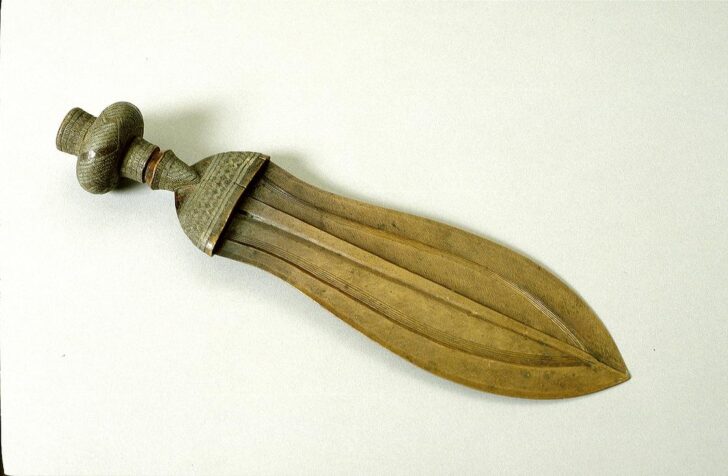Knife
Kuba

Description
Subject Matter:
With its characteristic leaf-like shape and dulled blade, the ceremonial knife or, ikul, was introduced as a peaceful replacement to the warrior throwing knife. It is typically carried by men as a symbol of prestige, warriorhood and authority. As a ceremonial object, It would also have been part of a noble man's daily costume, worn on the right side under the belt. At times, representations of an ikul could also be found on an Ndop: a carved figurative sculpture created to commemorate a Kuba king.
The geometric patterns on the handle of this knife are similar to patterns found on Kuba textile, basketry, sculpture, and female body scarifications. The diamond pattern on the bulb portion of the handle is created through a crossing and interlocking of lines. A double crossing can possibly be considered a reference to Woot, the mythical founder of the Kuba, whose mother invented mat weaving.
References:
Daniel Biebuyck, The Arts of Zaire, 1985
Georges Meurant, African Textiles from the Kingdom of Kuba, 1986
Roy Sieber, African Textiles and Decorative Arts, 1972
Jan Vansina, The Children of Woot, 1978
Physical Description:
Knife with leaf-shaped blade and wooden handle. Handle consists of multiple geometric patterns and intersecting lines.
Usage Rights:
If you are interested in using an image for a publication, please visit https://umma.umich.edu/request-image/ for more information and to fill out the online Image Rights and Reproductions Request Form.